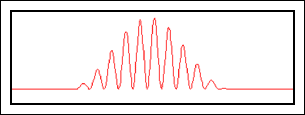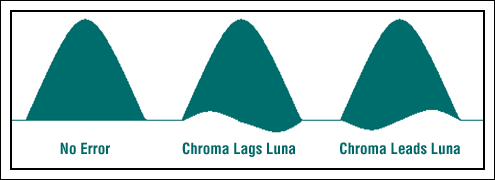Abstract: The final standard that affects the quality of a video system depends largely on the visual effect on the final image. Nevertheless, engineers often use an objective set of test standards when judging the quality of a video system. The inconsistency of chroma and brightness delay (color and brightness of visual signal), which is an important video parameter, but it is difficult to measure by an objective standard. This article is the second part of this series of application notes. It discusses the impact of this electrical parameter on the video system to help designers understand the inconsistency between chroma and brightness delay, that is, the degree of inconsistency between the color and brightness of electrical signals. The solution to the mismatch and its impact on video images will be discussed.
Introduction When processing composite video signals (CVBS), in order to ensure the quality of the image, designers must pay attention to several important parameters: chroma and brightness, that is, the color and brightness in the image signal; the delay error of chroma and brightness, which Related to the group delay deviation index, the group delay deviation defines the electrical delay of different frequency bands in the entire system.
Composite video signals are basically chroma (color) and brightness (grayscale) information, and are usually modulated into radio frequency signals for general broadcast television. In broadcast and television systems, it is critical to reduce the transmission bandwidth in order to use a simple single-line solution to achieve the connection of baseband video.
This article will describe the effect of chroma / luminance delay error on the system and the existing detection methods. This article is about the second part of the application note: Affecting the electrical parameters of the video system. Before reading this article, you should read Part 1: Visual Impact of Video Parameters in Video Systems: Part 1-DifferenTIal Gain and DifferenTIal Phase. Chroma to Luminance Delay This parameter refers to the difference between the time that the chroma component of the video signal passes through the system and the time that the corresponding luminance component passes through the system. This time difference, or delay deviation, will produce "stains" on the edges of objects in the image, making the image blurry. This indicator can usually be tested with a 12.5T sine-square wave pulse with 3.58MHz (4.43MHz for PAL) modulation (Figure 1). Measure the delay error by analyzing the baseline of the signal. If the baseline is a straight line, there is no delay error; if the chroma leads or lags the brightness, the baseline will fluctuate (no longer a straight line). At the same time, you can also see from the fluctuation of the baseline The relationship between brightness and brightness (Figure 2).

Figure 1. Test signal of 12.5T

Figure 2. Legend for the error during delay in the 12.5T pulse modulation test (you can clearly see the difference between the chroma-leading luma or the brightness-leading chroma) The visual impact of a large chroma / luminance delay deviation on the video system Figure 3 It is the original image when there is no chroma / luminance delay error. Figure 4 is the visual effect diagram after being affected by the chroma / luminance delay error. Obviously, Figure 4 does not look clear enough; There are “stains†on the edges. In order to see the effect of this delay deviation more clearly, an enlarged view is given in FIG. 5.

Figure 3. Original image without chroma / luminance delay

Figure 4. Visual effects of the same image when there is a delay error between luminance and chrominance

Figure 5. Close-up observation of the effect of delay deviation in Figure 4. The above example is an image with a chroma / luminance delay difference of 300 ns, which clearly shows the visual impact of delay errors. For most video systems, the delay deviation is usually less than this value. In general, the image quality produced by a delay deviation of less than 20ns is good enough; when it is greater than 20ns, the image quality will be significantly reduced. Therefore, for video system designers, in order to ensure vivid and clear images, it is important to pay attention to the chroma / luminance delay deviation.
Introduction When processing composite video signals (CVBS), in order to ensure the quality of the image, designers must pay attention to several important parameters: chroma and brightness, that is, the color and brightness in the image signal; the delay error of chroma and brightness, which Related to the group delay deviation index, the group delay deviation defines the electrical delay of different frequency bands in the entire system.
Composite video signals are basically chroma (color) and brightness (grayscale) information, and are usually modulated into radio frequency signals for general broadcast television. In broadcast and television systems, it is critical to reduce the transmission bandwidth in order to use a simple single-line solution to achieve the connection of baseband video.
This article will describe the effect of chroma / luminance delay error on the system and the existing detection methods. This article is about the second part of the application note: Affecting the electrical parameters of the video system. Before reading this article, you should read Part 1: Visual Impact of Video Parameters in Video Systems: Part 1-DifferenTIal Gain and DifferenTIal Phase. Chroma to Luminance Delay This parameter refers to the difference between the time that the chroma component of the video signal passes through the system and the time that the corresponding luminance component passes through the system. This time difference, or delay deviation, will produce "stains" on the edges of objects in the image, making the image blurry. This indicator can usually be tested with a 12.5T sine-square wave pulse with 3.58MHz (4.43MHz for PAL) modulation (Figure 1). Measure the delay error by analyzing the baseline of the signal. If the baseline is a straight line, there is no delay error; if the chroma leads or lags the brightness, the baseline will fluctuate (no longer a straight line). At the same time, you can also see from the fluctuation of the baseline The relationship between brightness and brightness (Figure 2).

Figure 1. Test signal of 12.5T

Figure 2. Legend for the error during delay in the 12.5T pulse modulation test (you can clearly see the difference between the chroma-leading luma or the brightness-leading chroma) The visual impact of a large chroma / luminance delay deviation on the video system Figure 3 It is the original image when there is no chroma / luminance delay error. Figure 4 is the visual effect diagram after being affected by the chroma / luminance delay error. Obviously, Figure 4 does not look clear enough; There are “stains†on the edges. In order to see the effect of this delay deviation more clearly, an enlarged view is given in FIG. 5.

Figure 3. Original image without chroma / luminance delay

Figure 4. Visual effects of the same image when there is a delay error between luminance and chrominance

Figure 5. Close-up observation of the effect of delay deviation in Figure 4. The above example is an image with a chroma / luminance delay difference of 300 ns, which clearly shows the visual impact of delay errors. For most video systems, the delay deviation is usually less than this value. In general, the image quality produced by a delay deviation of less than 20ns is good enough; when it is greater than 20ns, the image quality will be significantly reduced. Therefore, for video system designers, in order to ensure vivid and clear images, it is important to pay attention to the chroma / luminance delay deviation.
Surface Treatment DC Power Supply
Electrolysis Dc Power Supply,Charging Dc Power Supply,Motor Test Dc Power Supply,Experiment Dc Power Supply
Yangzhou IdealTek Electronics Co., Ltd. , https://www.idealtekpower.com